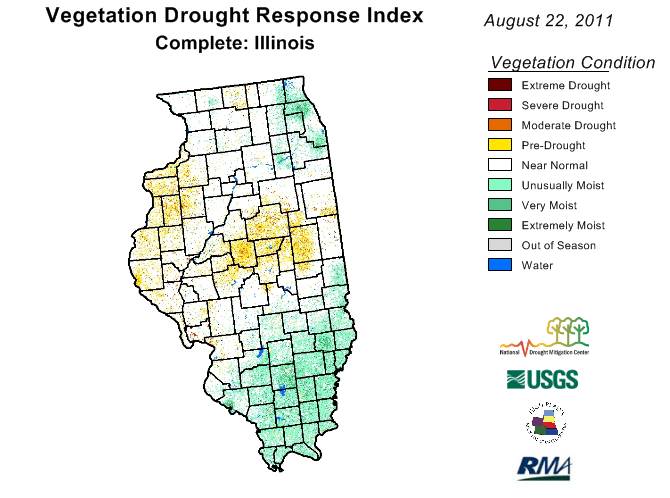Emerson Nafziger, University of Illinois agronomist, posted an interesting article about the impact of wet fields on newly planted corn. The article appears in the current issue of The Bulletin, published by the College of Agricultural, Consumer, and Environmental Sciences (ACES). The article starts out about frost damage but halfway down Emerson addresses the potential damage of all the heavy rains.
A larger concern after heavy rainfall in parts of Illinois this week will be standing water and, for the crop recently planted, the possibility of emergence problems. There were a few reports of death of germinating seeds in fields planted a few days before heavy rain in parts of western and southwestern Illinois, but this is not widespread. We think that such seeds simply ran out of oxygen and that shoots died before emergence. Seedlings that have emerged and have roots are more resilient, but there is a very good chance that plants that stand in water for more than two or three days will not survive, especially if temperatures go up. Higher temperatures mean less oxygen in the water and also faster seedling metabolism rates, so plants run out of oxygen sooner.
Even if plants survive, their regrowth can be slow due to poor conditions around the roots. Diseases can also invade plants that stand in water; one example is the downy mildew fungus that can carry crazy-top, whose symptoms won’t appear for weeks after the water is gone. In any case, we often see plant size and health diminish as we move from the edge to the middle of low areas where water stood. If the size of the drowned-out area is large enough to justify a repair-planting after it dries up, it might be a good idea to plant into the area around the edge with living but slow-growing plants as well, in order to replace sickly plants with healthy ones.
In an earlier post, I noted that areas in western and northern Illinois were exceptionally wet in the first half of May. The latest NASS report for Illinois shows that as of May 16, 56 percent of the state had topsoil moisture rated as surplus.





